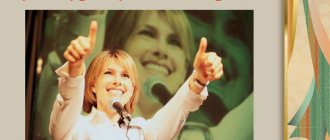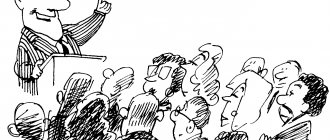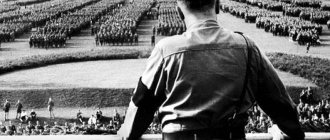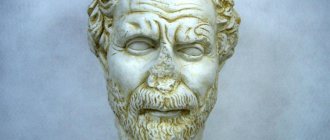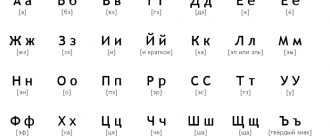The art of public speaking or analysis of Steve Jobs' speech
Have you always admired Steve Jobs' ability to introduce new Apple products? Did you watch Steve Ballmer's report in Moscow with interest? Were you surprised by the fact that Fidel Castro gave a speech lasting 27 hours? And, most importantly, do you want to learn how to make equally amazing presentations and deliver equally fiery speeches? Six months ago, while studying the biography of Steve Jobs, I read and watched the famous “Three Stories” told to graduates of Stanford University. Undoubtedly, this is one of Jobs' most famous, interesting and instructive speeches. After rummaging around the net, I found a good speech analysis. Here is an approximate translation of this analysis (if you find inaccuracies and errors, please write in the comments).
Analysis of Steve Jobs' "Stay Hungry, Stay Foolish" Speech
Steve Jobs wrote and delivered the "Stay Hungry, Stay Foolish" commencement address to Stanford University graduates on June 12, 2005.
The style and content of the speech were very different from his presentations of Apple products, but no less worthy of consideration. Important elements of this remarkable speech include: openness, simple classical structure, the Rule of Three, rich speech patterns, and the recurring theme of birth\death\rebirth.
My suggestion is to: 1. Watch the video; 2. Read the analysis below; 3. If you wish, read the full transcript of the speech (Rus) (English) to better understand it; 4. Share your opinion about this presentation. What did you like? What would you do better?
Openness. Audience praise, humility.
Jobs begins his speech with a compliment to the audience: “I am honored to be with you today at the commencement ceremony of one of the best universities in the world
. Further, he shows humility by admitting that he did not finish college. In just a few sentences, he creates a positive mood in the audience and increases their receptivity to his message.
Conversational style
Compare “Stephen Wozniak and I Founded Apple
” with
“Woz and I Founded Apple”
1. The first part is formal and creates an introduction to the two entrepreneurs who founded Apple; 2. The second part is informal and creates the idea of two close friends. Jobs chose a conversational style and it was a wise choice. His audience consists of graduates whose graduation often means different future life paths for close friends.
Simple structure and sentences.
Jobs keeps the structure simple and traditional: an introduction, then three stories, and a conclusion. He leads the audience for 14 and a half minutes using simple sentences: “Today I want to tell you three stories” “The first story is about connecting the dots” “My second story is about love and loss” “My third story is about death”
Pauses and timing
Jobs uses effective pauses after and especially after key points, allowing the audience to process them. For example, he ends his first story by explicitly referencing Robert Frost's poem "The road not taken" "even when it leads you off the well-worn path... and that will make all the difference."
This is followed by six seconds of silence. These words are full of humor, but I felt that the comedic component was somehow missing. Perhaps this was his deliberate aim to imitate an academic speaker? Despite this, timing coordination was lacking in some of the climaxes.
For example, consider his phrase "I didn't even know what a pancreas was"
.
(10:07) There's just a hint of accent, and no hint of a pause, before or after. I would like more. This is a special, tense moment in the speech, and the audience will try to relieve it with laughter. And a minute and a half later, he performs an even more wonderful trick, injecting a dose of humor into the essence of such a serious point: “Nobody wants to die.
Even people who want to go to heaven don't want to die . (11:40) Time coordination comes into play here very well.
Rule of Three
Jobs builds his speech around three main points, and he applies the rule of three in many sentences and paragraphs. “I learned [1]
about serif and sans serif, [2]
about
different spacing between letter combinations, [3]
what
makes great typography beautiful” (3:39) “It was [1] beautiful, [2] historical, [3] masterfully sophisticated..." (3:47) "founded a company called NeXT, another company called Pixar and fell in love with an amazing woman..." (7:16)
- Jobs follows the three-sentence principle, thereby emphasizing how every part of them is important “Other people's opinions,
all that pride,
all that
fear of embarrassment or failure” “
It means
trying to tell your children what you would say in the next 10 years.
This means
making sure that everything is arranged safely, so that your family has as easy a time as possible.
It means saying
goodbye."
(10:28) “ Don’t
waste it (time) living someone else’s life.
Don't
fall into the trap of dogma that tells you to live in other people's thoughts.
Don't
let the noise of other people's opinions drown out your inner voice" (12:18)
Some of the examples (in bold) are examples of the anaphora device - the repetition of a word or phrase at the beginning of a sentence or clause.
Abundance of speech patterns
Jobs uses a large number of figures of speech in his speech:
Antitheses
- a figure of speech used as a juxtaposition of contrasting words, often in a parallel structure.
Jobs uses some very powerful examples. “If I hadn’t dropped out, I never would have signed up” (4:34) “You can’t connect the dots looking forward;
you can connect them only by looking back" (4:40) "Death is probably the best invention of Life" (11:55) Syntactic parallelism
(and other examples of anaphora)
“my adoptive mother is not a college graduate, and my father was never a high school graduate” (10:38)
Anadiplosis
(repeating a phrase from the end of one sentence and from the beginning of another)
“The only way to be completely satisfied is to do what you think is a great thing.
And the only way to do great things is to love what you do.” This example is good, but it got a little lost from repeating "the only way"
Assonance (repetition of vowel sounds) - “And whenever the answer has been “No”
for too many days in a
row
,
I know
I need to change something.” (And as soon as the answer was “No” for several days in a row, I realized that something needed to change).
Repetition
In addition to the numerous examples highlighted earlier, Jobs concludes his speech by repeating “Stay hungry. Stay Reckless” three times. Repetition adds strength to a key argument, especially in the conclusion.
Recurring themes from "Birth, Death, Rebirth"
In a literal sense, Jobs's story about his birth is the first story, and his approach to death is the third story. However, this speech contains numerous other metaphorical references to the concept of the "Circle of Life":
- In addition to his physical birth, Jobs recounts how the couple initially decided they wanted a girl (a symbolic death, as his life is "cut short" due to his "gender reassignment"). Then he talks about a successful “rebirth” experience with his parents.
- His college education was short lived. The “death” of his formal learning process gave life to his informal learning process.
- His relationship with Apple is "at (20) born, raised, and then died." "Later, when NeXT was acquired by Apple, his career at Apple was revived."
- He uses the word "Renaissance" to describe Apple's current state.
- He receives a cancer diagnosis (one "death sentence"), but then undergoes a successful operation (revival).
- Stuart Brand, creator of the Whole Earth Catalog, "went through several issues" and "eventually published the final issue
By sprinkling such stories, Jobs repeatedly connects them for the audience. This is especially clear in the conclusion, when he touches on this metaphor to the audience one last time: "And now that you're graduating and starting over..."
Your thoughts?
Did you like this speech?
What do you want from public speaking? How could this presentation be improved? Original in English.
Kony's example
For example, one of the founders of the Russian legal profession, A.F. Kony, once defended in court a disabled hunchback who caused grievous bodily harm to his neighbor, who, day after day for many years, called him a freak when the disabled person passed by his house. The defendant, who had never responded to an insult, suddenly could not stand it one day, grabbed a stone and threw it at his offender, breaking his head. And at the trial A.F. Kony thought of an original public performance. He stood up and addressed the jury: “Gentlemen of the jury!” - and fell silent. After a pause, he repeated his line and fell silent again. Then again too. The assessors whispered nervously, and after the fourth such appeal they shouted at A.F. Kony: “Are you kidding us?” Then Koni said: “I addressed you politely only 4 times, and you were already nervous. And how should my client feel, listening to insults day after day for many years?” The disabled man was acquitted. Public speech by A.F. Kony achieved its goal.
That is why at the first – pre-communicative – stage of the speech, you need to think through its purpose and clearly understand its topic. A.F. Koni knew what he wanted to achieve, since the next algorithm for his preparation was obvious: assess the character of the audience and the situation, and then proceed to the text itself.
The text, as in the case of Koni, should be concise and bright. This cannot be done without a clear understanding by the speaker of what goal he wants to achieve. Thus, shortly before Napoleon’s invasion, Alexander I hosted French diplomats, already realizing that war could not be avoided. The Emperor clearly understood the purpose of his speech: it was necessary to convey to the French the meaninglessness of Napoleon’s undertaking, its doom. His speech was magnificent in its brevity and brightness of impact: “Here is little Europe,” he said, approaching the map hanging on the wall, “but here is big Russia,” he took a couple of steps so that his hand touched the Far East. - In case of failure, you can retreat only to Paris, but I can retreat even to Kamchatka! And at the same time, every inch of this land will be hostile to you, not a single woman will stop fighting. Russia may lose individual battles, but there will never be a defeated Russia.” Ambassadors and diplomats left shocked.
The more precise and expressive the speech, the more preparation it requires. And the point is not only in its speech design: you need to assess the composition of the audience, be able to put yourself in the place of future listeners. And even if the audience is heterogeneous, you need to think through the speech so that no one gets bored, so that the goal of the speech is achieved in relation to everyone.
Pavel Vlasov
A public speech, well structured and carefully prepared, can greatly influence the public worldview and give results that the author-speaker himself did not even imagine. So, for example, in the novel by A.M. Gorky's "Mother" Pavel Vlasov, arrested on political charges, refused to escape, prepared by his comrades, in order to make a speech at the trial! And he thought it through painfully. He didn’t care what sentence they would give him, but there was a goal - to convey his faith to a large number of people. If you analyze his speech, you can use it to teach oratory.
Pavel understood that his speech would be in court, so he began with this opening: “A man of the party, I recognize only the court of my party...”, and with this one phrase he immediately placed himself above the circumstances and above the power that was judging him. It was as if he had grown taller – and the hall froze. His speech is divided into clear parts, each of which begins as if with a refrain: “We are socialists...”, “We are workers...”, “We are revolutionaries...”, and this “refrain” increased the emotional tension so much that “everyone felt a strange , the captivating power of his faith,” writes Gorky.
The novel, undeservedly forgotten, provides an excellent example of the internal dramaturgy of the hero’s speech: Pavel thought through not only the beginning, but also the beginning (“We were arrested as rebels...”), and the climax (“How can you destroy the workers - those who you, comrade judges, feeds?..."), and the denouement: Pavel’s speech ended with the life-affirming “And this will be!” - you can’t add anything, everything is said, everything is clear, everything is exhaustive. Constructing such a speech is worth a lot.
Summary
There are no small details in public speaking. Even the science of proxemics was formed - the science of the temporal and spatial organization of communication. Even the placement of furniture (tables and chairs) plays a big role, because you can stand in such a way that you feel separated from the audience; you can set up a table and seat the listeners at it so that you create, as it were, two confrontational sides; You can use furniture to create a conference atmosphere, etc. This is unacceptable: modern trends in the development of public speaking imply dialogism.
We observe in the media public speeches based on a dispute, including parts of interviews, discussions, polemics... This is quite in the spirit of ancient traditions! Dialogical presentation is very important for lawyers, sales representatives, and middle managers. However, don’t think that this is some kind of know-how!
In Mamin-Sibiryak’s novel “Privalov’s Millions,” the son of a small merchant asked his father for help in opening his own shop. The father said that if his son could convince his friend, a very stingy merchant, to buy from them a harp that no one had needed for a long time, then the son could count on his help. And the son thought through his “performance”, positioning himself with a harp right on the porch of the stingy merchant’s house. He paid a beautiful girl he found who knew how to play the harp, and when the merchant arrived at his house, this public performance was a success: the girl played so tenderly that the “organizer” of the performance did not have to say anything: the effect of surprise worked! — The harp was purchased, and the “sellers” were invited to the merchant’s house. Thus began the young man’s independent journey...
So, organizing a public speech is a matter to which you can devote your life, constantly improving in such a complex and necessary art.

